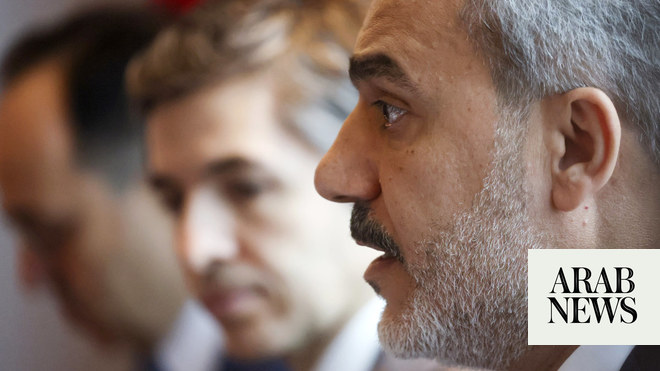
As Imran Khan begins talks with potential coalition partners in Pakistan’s new government, his in-tray is not short of challenges; ballooning debt, dwindling foreign reserves, a strained relationship with traditional ally the United States, and increasing dependency on China. Where will he take the foreign policy of this beautiful but troubled land?
Now is a good time to look at how we got to where we are. Pakistan’s foreign policy has always been heavily influenced by its neighbors, because you cannot change geography. India is the strong neighbor and foe to the south. They have fought three wars — two over Kashmir in 1947 and 1965, and one over the secession of East Pakistan to become Bangladesh in 1971. There were also some skirmishes in 1999, when Pakistani soldiers infiltrated the Indian Kargil district.
To the north there is Afghanistan, which despite strong cultural ties opposed the young nation’s membership of the UN and meddled in its domestic affairs, badly straining the relationship.
In the 1950s and 1960s Pakistan’s economy did well and the country was relatively affluent. Since then the economy has been on a downward trajectory, not helped by one of the world’s highest population growth rates. In 1951 West Pakistan had a population of 34 million and East Pakistan 42 million. In 1994 Pakistan’s population was 126 million, and it passed the 200 million mark this year. This growth, along with chronic economic mismanagement and corruption, took a toll on the economy and the people.
Pakistan became close to the US when it joined the Southeast Asia Treaty Organization and the Central Treaty Organization, and US President Dwight D. Eisenhower supplied arms. India’s response was to sign an Indo–Soviet Treaty of Peace, Friendship and Cooperation in 1971, which did nothing for a cordial relationship between the two countries. When the Soviet Union invaded Afghanistan in 1979 Pakistan stood shoulder to shoulder with Western allies. The mujahidin were partially trained in Pakistan and operated from there before they infiltrated Afghanistan. The conflict — financed by the opium trade — had a socially corrosive effect on Pakistani society, particularly in the provinces of Sindh and Baluchistan, which were a conduit for arms and supplies. At the same time Pakistan (mainly Baluchistan) provided shelter to several million Afghan refugees.
Let us not forget that Pakistan is an Islamic republic; its relationship with Saudi Arabia has been friendly throughout its history, and the Kingdom has been a sound friend and generous investor.
Cornelia Meyer
Relations between Pakistan and India reached a low point in May 1998, when Pakistan detonated five test weapons to catch up with India in the nuclear arms race. Attaining nuclear status not only did nothing in terms of getting along with India, it also soured Pakistan’s relationship with the West. Matters became so bad that organizations such as the World Bank and the Asian Development Bank suspended or downgraded their aid packages, on which Pakistan’s economy depended. The nuclear arms issue came at the time of the dissolution of the Soviet Union. India grew closer to the West, which saw great potential in a market with a population of 813 million at the time.
There was another rapprochement with the West when George W. Busch went to war in Afghanistan and Pakistan again became strategically pivotal to US geopolitical goals. There was a repeat of the unhealthy drugs, arms, supplies, and refugee dynamic.
Relations soured again when US Special Forces tracked down and killed Al-Qaeda leader Osama bin Laden in Abbottabad. There was much criticism of Pakistan’s military establishment for being lax, but it is easy to judge. The relationship with Afghanistan and the Taliban has never been an easy one; one wrong move might well result in bombs going off in the squares of Karachi, Peshawar or Lahore, with hundreds of innocent people killed.
Recently, China has become Pakistan’s strongest ally. The One Belt One Road initiative brought the Pakistan-China economic corridor. It consists of an investment program worth $64 billion and has built the port of Gwadar in Baluchistan, along with roads, railways and power stations, although it has done little so far in terms of soft development such as schools and hospitals. China has also surpassed Japan as the biggest lender to Pakistan, and the current account deficit has more than quintupled in the past five years to $16 billion. The IMF and other international lenders are concerned about undue economic dependence on China, and the affordability of ever-increasing debt.
Pakistan’s geopolitical strategic advantage is that is perched at the crossroads of North, South, East and West. That is also a curse, as it is all too often close to conflict, and is dragged in. Pakistan’s great asset is its people, but uncontrolled population growth is also a curse because it eats away at every percentage point of economic growth.
Pakistan stood shoulder to shoulder with the West whenever it was asked. These relationships were often put on the backburner when Western need subsided and a juicy market to the south beckoned. Pakistan has found a new friend in China, but it needs to put its national interest first and not be seduced into a debt trap; that can be costly, as Sri Lanka found when it had to hand over the port of Hambantota to its Chinese creditors.
Finally, let us not forget that Pakistan is an Islamic republic; its relationship with Saudi Arabia has been friendly throughout its history, and the Kingdom has been a sound friend and generous investor.
It will be interesting to see how Imran Khan navigates the geo-economic and geopolitical predicament in which he and his country find themselves.
Cornelia Meyer is a business consultant, macro-economist and energy expert. Twitter: @MeyerResources
Disclaimer: Views expressed by writers in this section are their own and do not necessarily reflect Arab News" point-of-view












